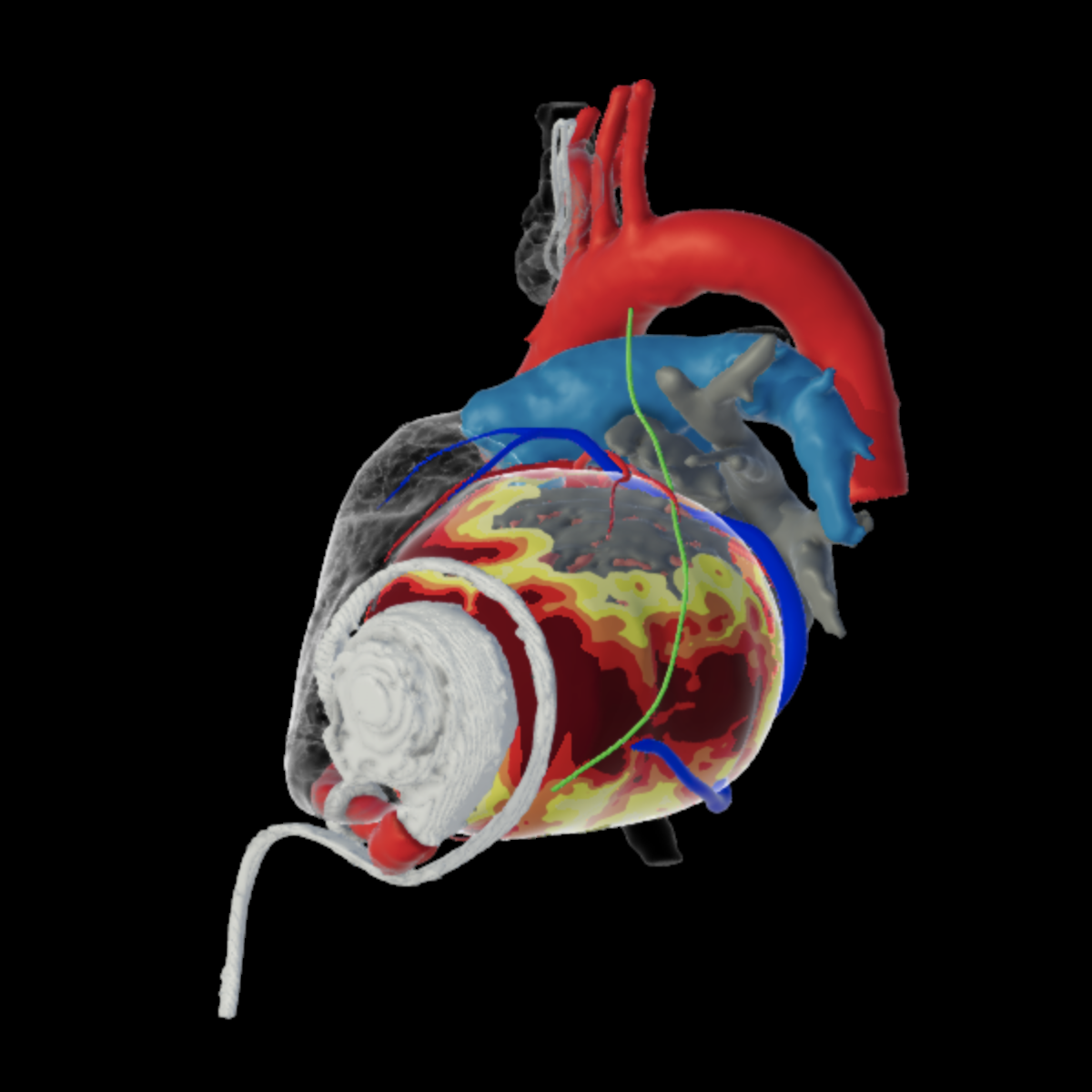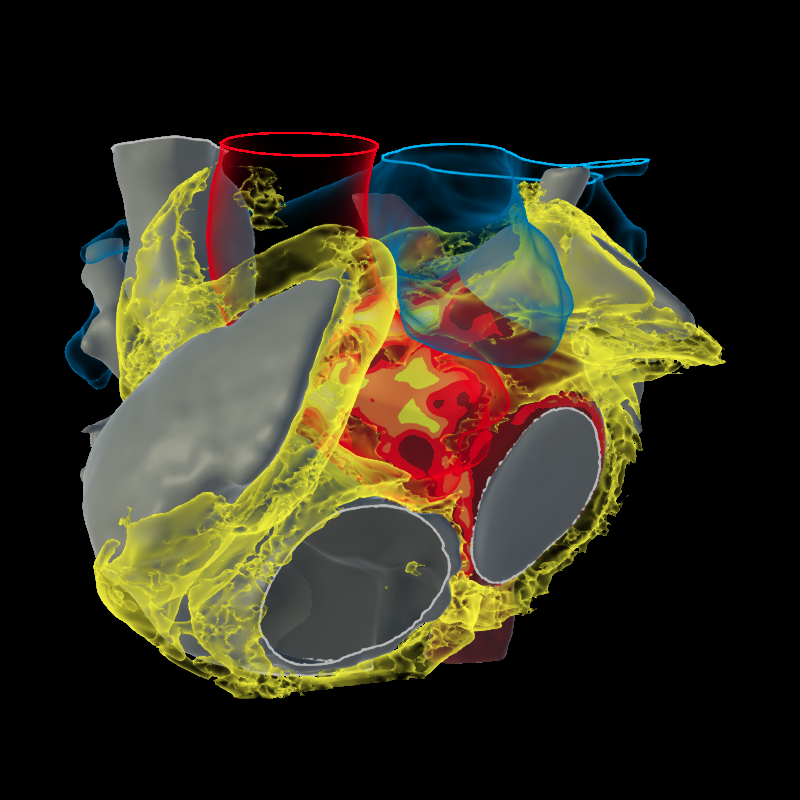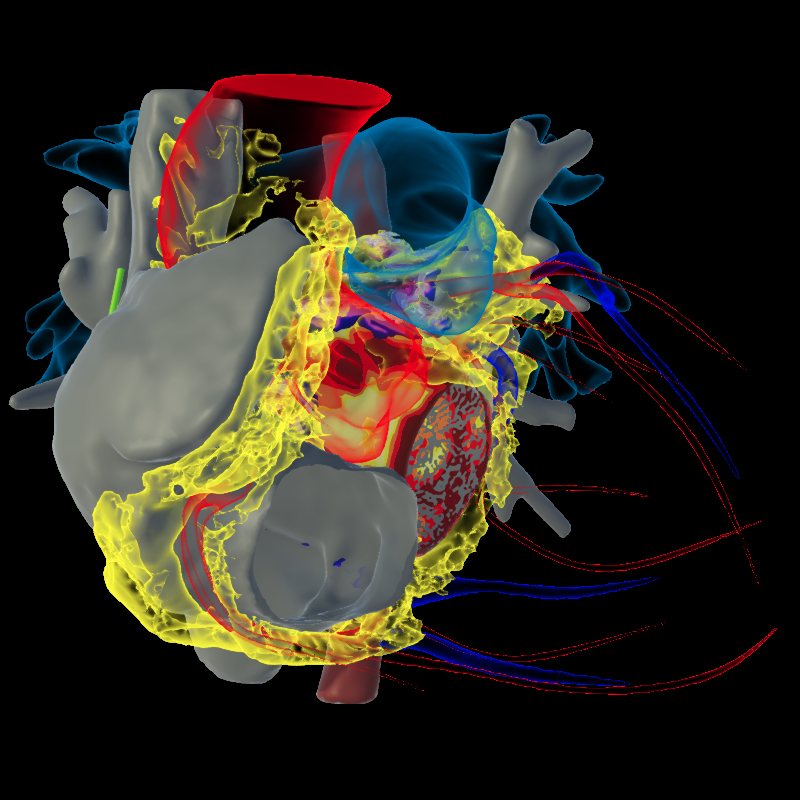Ventricles
Ischemic
The most common VT etiology, our proprietary wall thinning rendering provides a roadmap for localizing spatial aspects of the scar and the critical isthmuses within the substrate that enable reentrant circuits. It allows more precise targeting and potentially less challenging mid-isthmus ablation targets compared to entrance/exit sites. These sites co-localize nicely with LAVA, ILAM and functional mapping/pacing maneuvers.

Ischemic

LVAD
Non Ischemic
inHEART modeling characterizes the ventricular substrate in these difficult NICM scenarios. Scar transmurality, i.e., endocardial, mid-myocardial and epicardial scar is delineated, informing the mapping and ablation strategies prior to the procedure. Fatty infiltrate, calcifications and adipose fat are clearly rendered in these patients. Dark Core matter from previous ablation procedures help tell the tale of why the patient is again presenting with VT and may help guide additional therapy.

ARVC

Cardiac Tumor

Dilated CMP

MR Transmurality

Post myocarditis
Congenital
Information about the extent of prior surgical interventions is not always available in this adult population. Visualizing complex anatomy, baffles, and surgical incisions that frequently sustain arrhythmias may reduce procedure time when the intervention is performed at a site different from the original surgery.

Fontan surgery

Tetralogy of fallot CT

Tetralogy of fallot MR

Transposition of great vessels
Atria
In patients with durable PVI and PWI who present with AF, assessing the atrial substrate for potential linear ablation or inducible triggers may be a useful strategy. Wall thickness data may inform the placement of transmural ablation lines in AF and left atrial flutters. Epicardial adipose tissue (EAT) infiltrate may be causative in this subset of patients.

Atrial Fibrillation CT

Cardioneural Ablation
